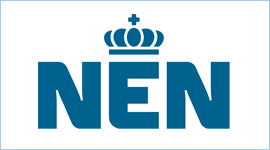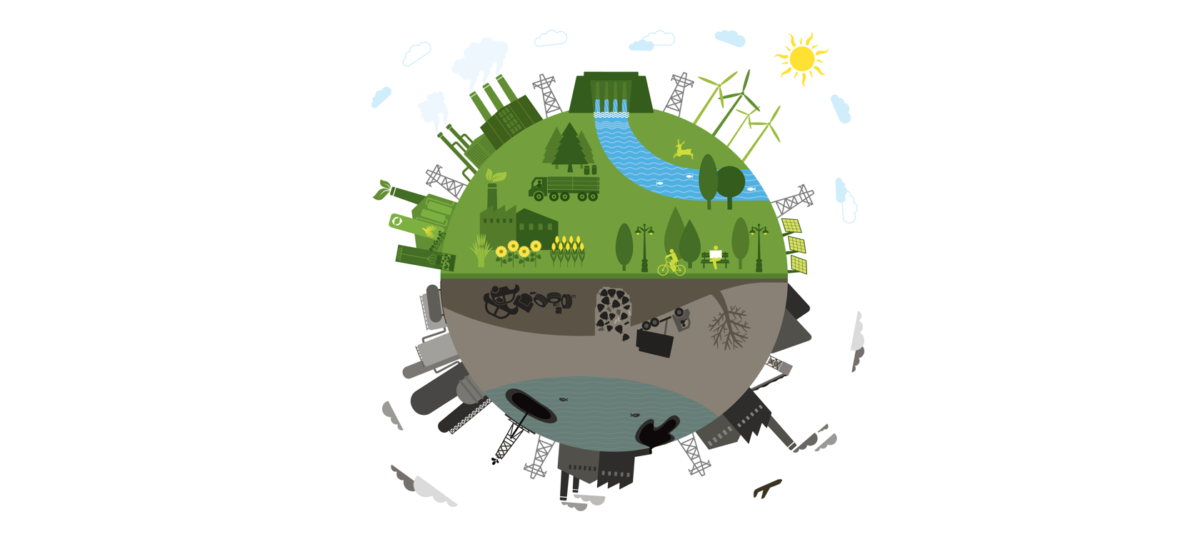Growing concerns around climate change and the impact of human activities on global warming has resulted in a global trend of organizations adopting CSR / sustainability policies. Simultaneously, digital technologies were becoming more and more prominent in most organizations. Consequently, digital technologies changed the way business is done in a lot of industries by moving business processes online. These two trends resulted in numerous companies making ‘anti-paper’ claims about digitized processes being more environmentally friendly as it removed the dependency on paper and plastic. However, are these claims actually true? Do digital processes actually have a lower environmental footprint than traditional business processes where e.g. documentation, promotion and marketing is done on physical materials such as paper?
For this question to be answered, there first needs to be clarity on how environmental footprint is defined. In this case, environmental footprint will be defined as the effect that an activity has on the environment, and this could be an effect in terms of CO2 emissions, amount of waste produced, recycle rate or else.
The claims that digital processes are more environmentally friendly than traditional processes seem very logic. On first sight, digital processes consume less physical materials than traditional processes; saving documentation in the cloud vs printing or writing the documentation on paper. However, in reality this is not the case. Obviously, paper or other physical materials such as plastic are in principle not environmentally friendly. In the case of paper, it uses wood as its main element, uses 400 – 2600 liters of water for the production of one kilo of paper and emits on average 500 grams of CO2 emissions per kilo of paper (which is the equivalent of eating two avocados). Altogether, the paper industry accounts for 7% of the global CO2 emissions. Compared to the airline industry, which is known as one of the most harmful industries, it is three times as much. Despite these numbers, it appears that the paper industry does not have a negative influence on the vegetation. On the contrary, it is proven that forest coverage has increased in both Europe and the US. Moreover, paper is recyclable up to seven times and approximately half of all paper is already being recycled globally, this reduces the amount of waste that paper leaves behind.
Digital processes on the other hand, do not seem to use a lot of materials on the surface. However, the devices used to document and process the business operations online require a lot of energy. Per organization, the CO2 emissions of energy usage can differ significantly dependent on whether the energy comes from a renewable source or fossil fuels. Moreover, the devices in the offices are not the only pieces of hardware that need energy with online documentation. Online data storage also requires enormous data centers that consume energy 24/7. Collectively, it is expected that the IT industry will account for 14% of total global CO2 emissions, whereas this is currently only 3%. Besides energy usage, technological devices require a lot of materials among which lithium, (precious) metals and rare commodities in the production phase. Despite the fact that concrete evidence and literature are not available yet on the environmental footprint of technological devices due to its relatively short existence, it is clear that technological devices require a lot of (non-recyclable) resources and that it is very likely that this has consequences for the environment.
In short, both traditional (paper-based) and digital processes have a significant environmental footprint on the planet. Due to the complexity of the total footprints and the lack of concrete evidence on technological devices, it is very hard to determine whether or not digital processes are actually less harmful to the environment than traditional processes. Therefore, organizations should be very careful with such statements and individuals should be critical and not blindly believe such statements as it can be used as a way of greenwashing.
References:
Cambridge Dictionary, n.d. Environmental footprint. Accessed on the 4th of October 2020 via https://dictionary.cambridge.org/dictionary/english/environmental-footprint
Kinsella, J. (2017). Digital Vs Paper: A History Of Printing, In House And Outsourced. Accessed on the 4th of October 2020 via https://www.ceotodaymagazine.com/2017/11/digital-vs-paper-a-history-of-printing-in-house-and-outsourced/
Klein Lankhorst, M. (2019). De papierindustrie stoot meer CO2 uit dan de luchtvaart. Is het nog wel verantwoord om papieren boeken uit te geven? Accessed on the 4th of October 2020 via https://decorrespondent.nl/9463/de-papierindustrie-stoot-meer-co2-uit-dan-de-luchtvaart-is-het-nog-wel-verantwoord-om-papieren-boeken-uit-te-geven/509327049-b14c9d5f
Moodie, A. (2014). Is digital really greener than paper? Accessed on the 4th of October 2020 via https://www.theguardian.com/sustainable-business/digital-really-greener-paper-marketing
Project Drawdown, n.d. Recycled Paper. Accessed on the 4th of October 2020 via https://www.drawdown.org/solutions/recycled-paper
Simpel Duurzaam, (2020). Hoeveel is 1 kilo CO2? Accessed on the 4th of October 2020 via https://simpelduurzaam.nl/hoeveel-is-1-kilo-co2/
Two Sides, n.d. Electronic communication also has environmental impacts. Accessed on the 4th of October 2020 via https://www.twosides.info/electronic-communication/




